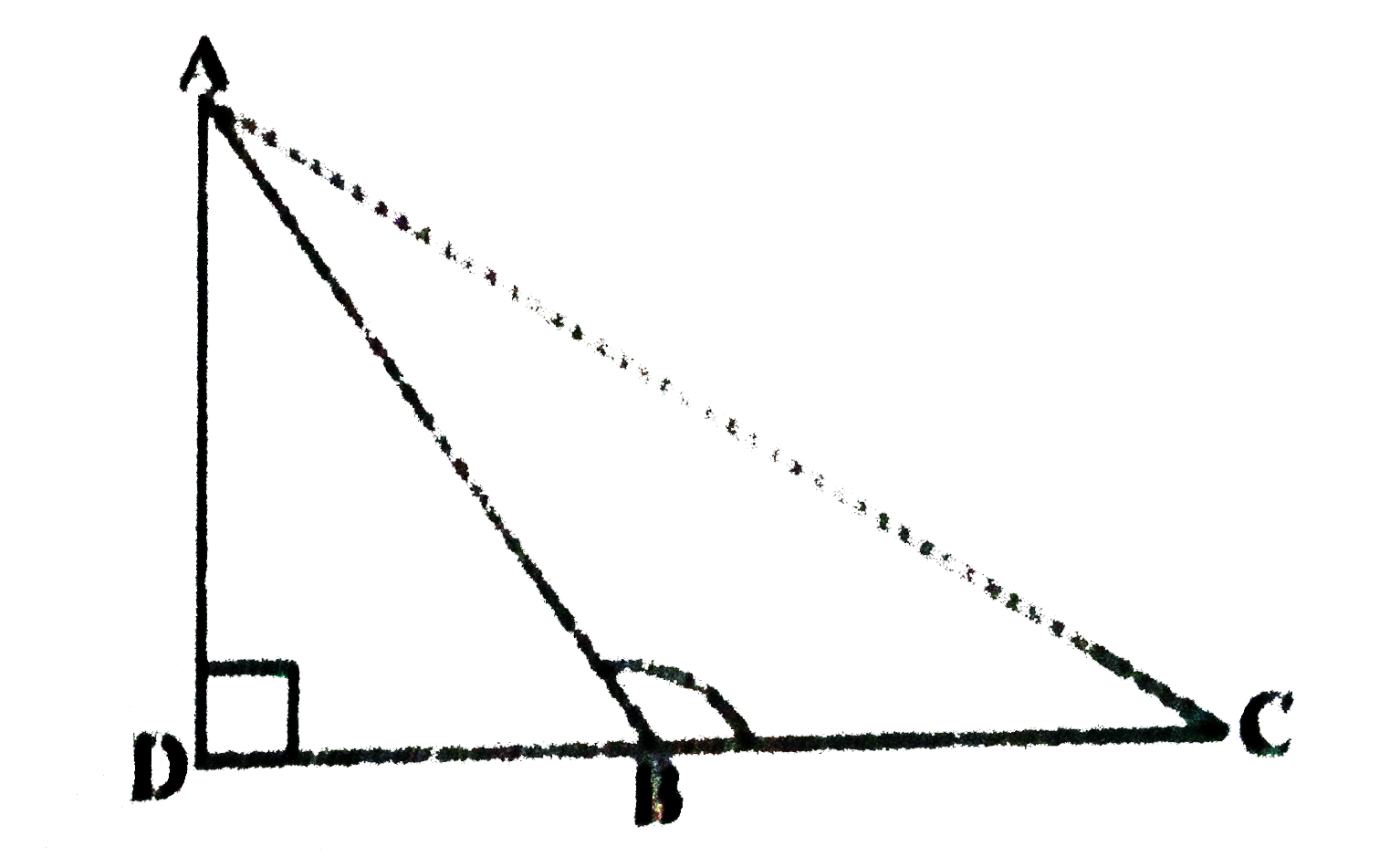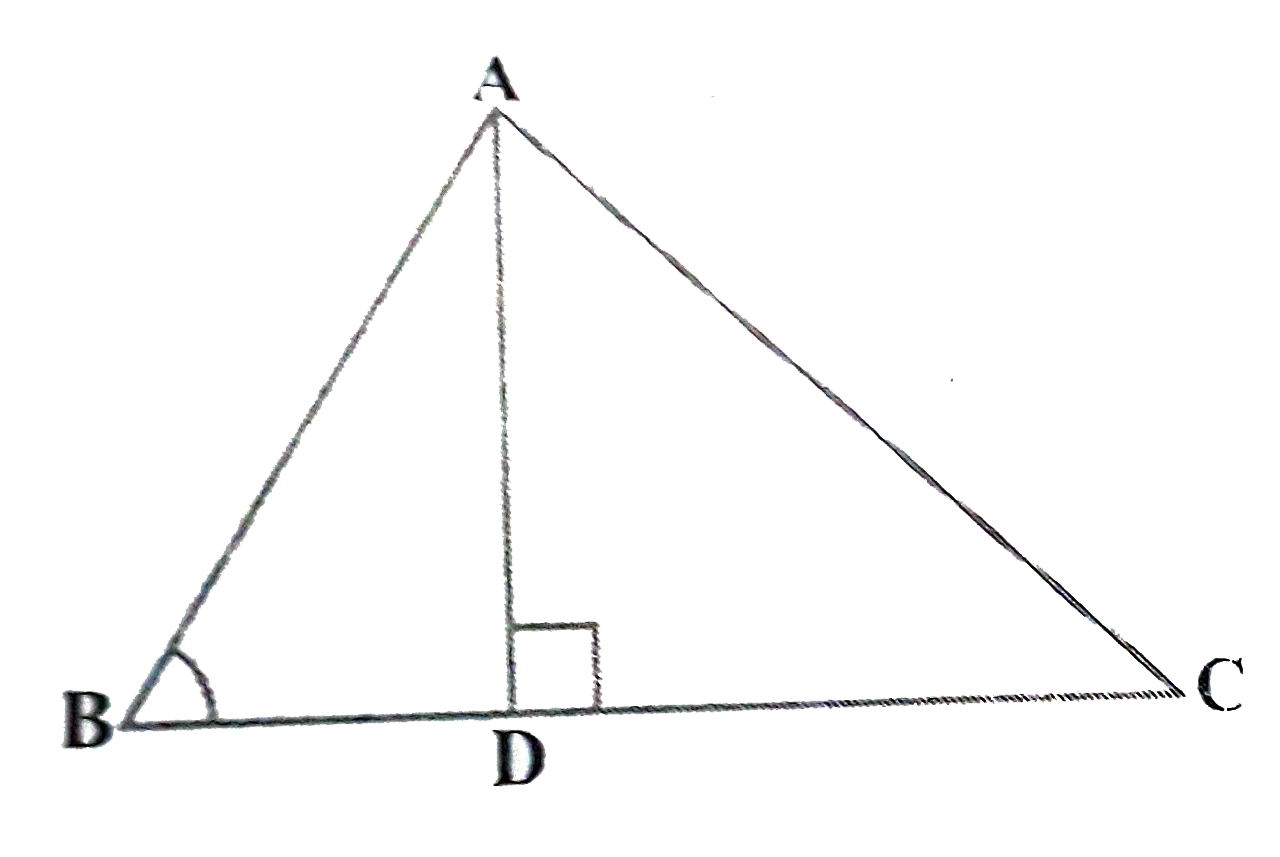Draw a triangle ABC, with AC=4 cm, BC=3 cm and ∠C=1050. Measure AB. Is (AB)2=(AC)2+(BC)2? If not, which one of the following is true: (AB)2>(AC)2+(BC)2 or (AB)2<(AC)2+(BC)2?
To solve the problem step by step, we will follow the instructions to draw the triangle and perform the necessary calculations.
Step 1: Draw Triangle ABC
1. Draw Line BC: Start by drawing a line segment BC that measures 3 cm.
2. Construct Angle C: At point C, use a protractor to measure an angle of 105 degrees. Mark this angle.
3. Draw AC: From point C, draw a line segment AC that measures 4 cm, making sure it aligns with the angle you just marked.
4. Label Point A: Mark the endpoint of segment AC as point A.
5. Join Points A and B: Draw a line segment AB to complete triangle ABC.
Step 2: Measure AB
1. Use a Ruler: Measure the length of segment AB using a ruler. Let's assume the measurement is approximately 5.5 cm.
Step 3: Calculate the Squares of the Lengths
1. Calculate AB²:
AB2=(5.5cm)2=30.25cm2
2. Calculate AC²:
AC2=(4cm)2=16cm2
3. Calculate BC²:
BC2=(3cm)2=9cm2
Step 4: Check the Pythagorean Theorem
1. Sum of AC² and BC²:
AC2+BC2=16cm2+9cm2=25cm2
2. Compare AB² with AC² + BC²:
- We have AB2=30.25cm2 and AC2+BC2=25cm2.
- Since 30.25>25, we conclude that AB2>AC2+BC2.
Conclusion
- The statement (AB)2=(AC)2+(BC)2 is not true.
- The correct relationship is (AB)2>(AC)2+(BC)2.
---
1. Draw Line BC: Start by drawing a line segment BC that measures 3 cm.
2. Construct Angle C: At point C, use a protractor to measure an angle of 105 degrees. Mark this angle.
3. Draw AC: From point C, draw a line segment AC that measures 4 cm, making sure it aligns with the angle you just marked.
4. Label Point A: Mark the endpoint of segment AC as point A.
5. Join Points A and B: Draw a line segment AB to complete triangle ABC.
1. Use a Ruler: Measure the length of segment AB using a ruler. Let's assume the measurement is approximately 5.5 cm.
1. Calculate AB²:
AB2=(5.5cm)2=30.25cm2
2. Calculate AC²:
AC2=(4cm)2=16cm2
3. Calculate BC²:
BC2=(3cm)2=9cm2
1. Sum of AC² and BC²:
AC2+BC2=16cm2+9cm2=25cm2
2. Compare AB² with AC² + BC²:
- We have AB2=30.25cm2 and AC2+BC2=25cm2.
- Since 30.25>25, we conclude that AB2>AC2+BC2.
- The statement (AB)2=(AC)2+(BC)2 is not true.
- The correct relationship is (AB)2>(AC)2+(BC)2.
Topper's Solved these Questions
Similar Questions
In a triangle ABC , right angled at B, the inradius is AB+BC−AC2 (b) AB+AC−BC2 AB+BC+AC2 (d) none
View SolutionIn figure, ABC is triangle in which ∠ABC=90∘and AD⊥CBproduced. Prove that AC2=AB2+BC2−2BC.BD.

View SolutionIn figure, ABC is a triangle in which ∠ABC=90∘and AD⊥BC. Prove that AC2=AB2+BC2−2BC.BD.

View SolutionMedians of ABC intersect at G . If ar (ABC)=27 cm2, then ar (ABGC)= 6 cm2 (b) 9 cm2 (c) 12 cm2 (d) 18cm2
View SolutionIn an equilateral triangle ABC if AD⊥BC, then AD2 = (a)CD2 (b) 2CD2 (c) 3CD2 (d) 4CD2
View SolutionLet a,b,c>0 such that a>b>canda+c>2b. If In(a+c)+In(a−2b+c)=2In(a−c), then which of the following relation is(are) correct?
View SolutionIn a ABC , AD is the bisector of ∠BAC . If AB=6cm , AC=5cm and BD=3cm , then DC= 11.3cm (b) 2.5cm (c) 3:5cm (d) None of these
View SolutionIn right triangle ABC , right angle at C, M is the mid-point of the hypotenuse AB. C is jointed to M and produced to a point D such that DM=CM. Point D is joined to point B. Show that AMC≅BMD (ii) ∠DBC=90∘ (iii)DBC≅ACB (iv) CM=12AB
View SolutionIn a ABC, D, E, F are the mi-points of sides BC, CA and AB respectively. If ar(ABC)=16cm2, then ar (trapezium FBCE)= 4 cm2 (b) 8 cm2 (c) 12cm2 (d) 10cm2
View SolutionIn a ABC,A=2π3,b−c=3√3cm and area (ABC)=9√32cm2. then 'a' is 6cm b. 9cm c.18cm d. none of these
View Solution